Description of the tambourine and features of playing on it
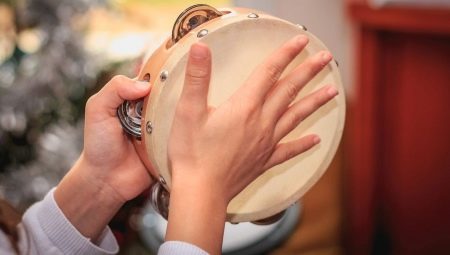
The tambourine is a rather interesting old musical instrument. Its history has ancient roots, he himself is one of the close relatives of the drum and tambourine, and also belongs to the family of percussion membranophones. You can learn about what this musical instrument is, what is its difference from a drum and a tambourine, what is its history and about many other things, from the information below.
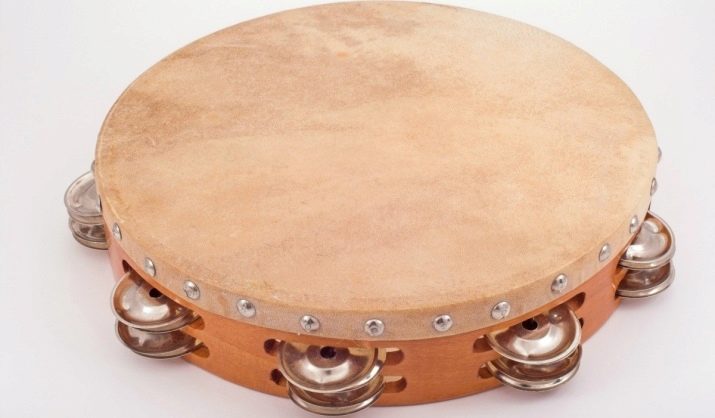
What it is?
The tambourine is one of the types of percussion musical instruments that has the shape of a cylinder and belongs to the membranophones family.
In addition, this is the name of a special dance in a bipartite scale, as well as a musical composition for it.
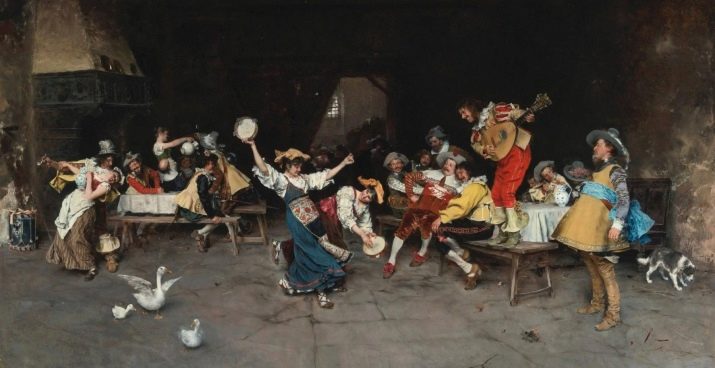
Tambourine, due to its form and sound, is often used in a variety of shamanistic ceremonies, rituals, chants and dances. In the hands of a talented shaman, the sound of this instrument becomes truly bewitching, magical and enchanting. In addition, you can hear its sound in the music of the Turkish, Greek and Italian peoples.

The closest relatives of this musical instrument are an ordinary drum or a tambourine. However, the difference between all these tools is still very noticeable.
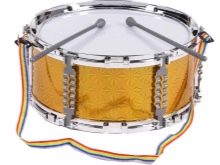
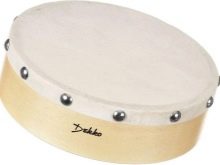
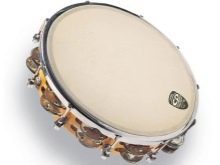
The tambourine looks like a small drum, but it is much larger in length, and, on the contrary, is smaller in width. In addition, in the game it is much more pliable than the drum. There are also quite a few differences from the tambourine, as well as external similarities. However, the tambourine differs in some features of its design, and it sounds much softer and not so harsh, rather, even dull.
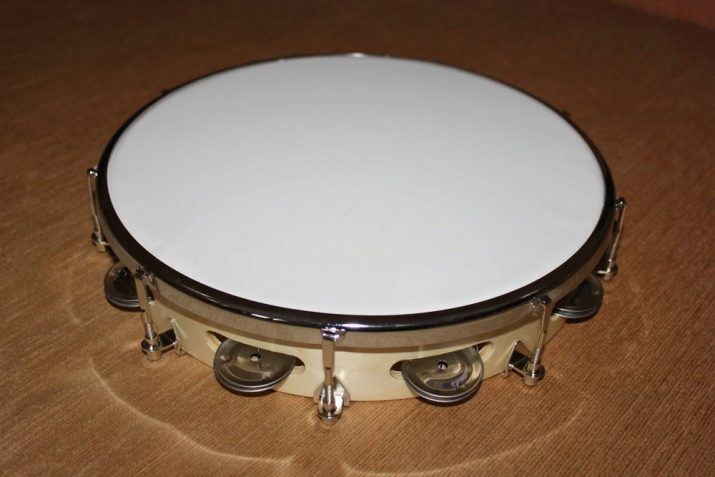
Description of a musical instrument
A traditional tambourine looks like a round wood bezel. There are also semicircular and triangular tambourines, but much less often, and modern musical instruments can even have the shape of a star. But back to the traditional tambourine.
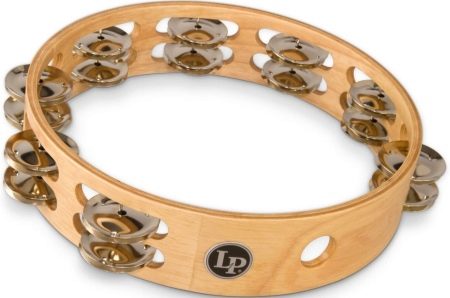
In diameter, its rim usually does not exceed 30 centimeters and has a width of about 5 centimeters. The rather compact size of the tambourine and its low weight are a big advantage of this musical instrument, since it is thanks to these factors that it is so convenient to move it and take it anywhere with you.

An indispensable part of any tambourine is a membrane or a membrane, but some of the models do not have it at all. On one side, and less often on two, the tambourine is tightly covered with the skin of an animal, more often a ram or a cow - this part is the main one in the tambourine, because it is thanks to it that the sound appears.
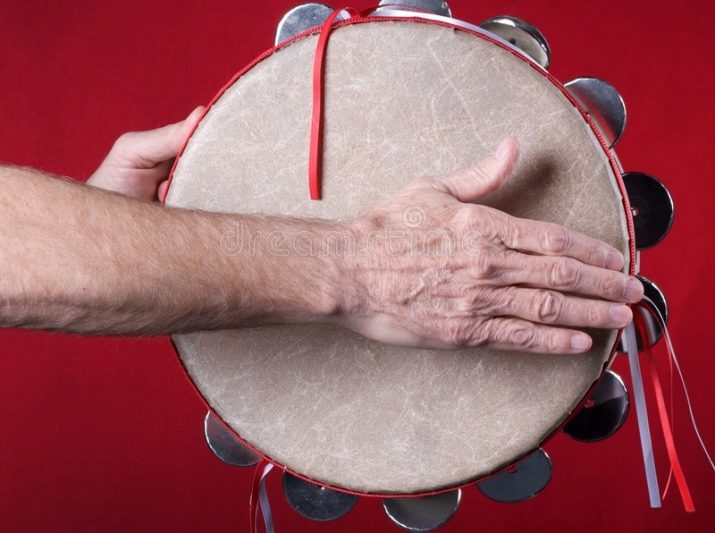
The second part of this musical instrument, which contributes to the appearance of sound, is located around the entire rim. This part is a pair of metal discs, their number usually varies from 4 to 16. This part of this musical instrument is also often called cymbals, bells or jingles. They only make sound when the instrument is shaken.
To produce a louder and more distinct sound, the tambourine is hit not at its very center, but in areas that are located closer to the edge.
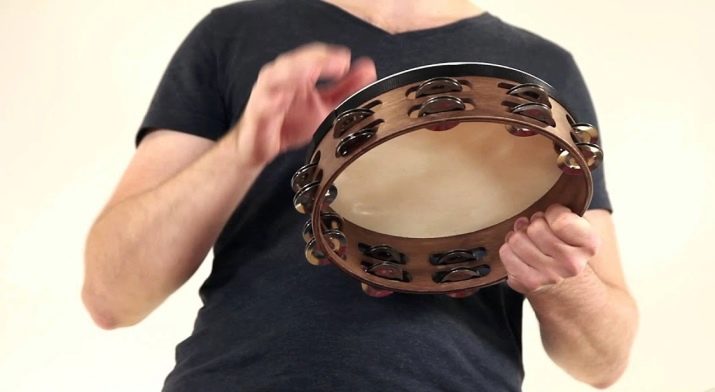
History
The history of the tambourine is quite rich, because the instrument is one of the very, very old. It will be difficult to name the exact date or at least the period of its appearance, but we can definitely say that the very first such instrument appeared in the Middle East. Mentions of him are found even in some chapters of the Bible; it could be found in Egypt, as well as in Iraq. This instrument is closely associated with some Asian peoples. In addition, most often it could be found in India, in particular among its indigenous inhabitants.
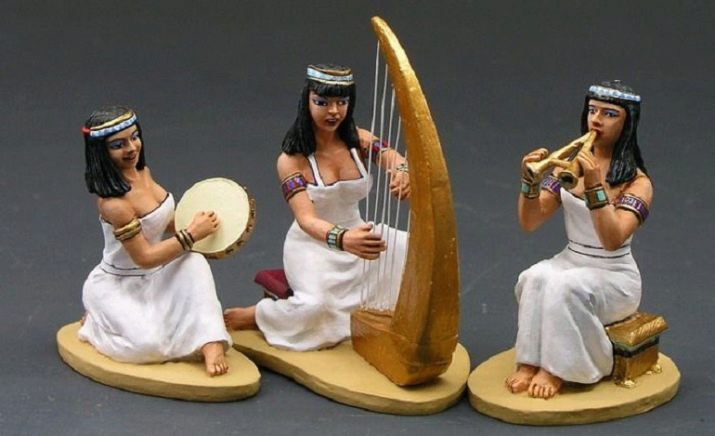
There, the tambourine served as one of the main attributes for shamanic religious rites. The instrument was mainly used to put the shaman into a trance. It was quite simple to do this, since it was facilitated by monotonous sound, rotation, ringing, as well as uniform rocking. Shamans treated this attribute with respect and great trepidation, and therefore it was passed on exclusively by inheritance.

Much later in the 18th century, tambourine appeared in France, in its southern region. There it was quickly adapted as an accompanying instrument for performing musical works on the flute, it was he who gave the melody a special rhythm. After a while, the instrument began to sound literally everywhere, from streets to operas and ballets.
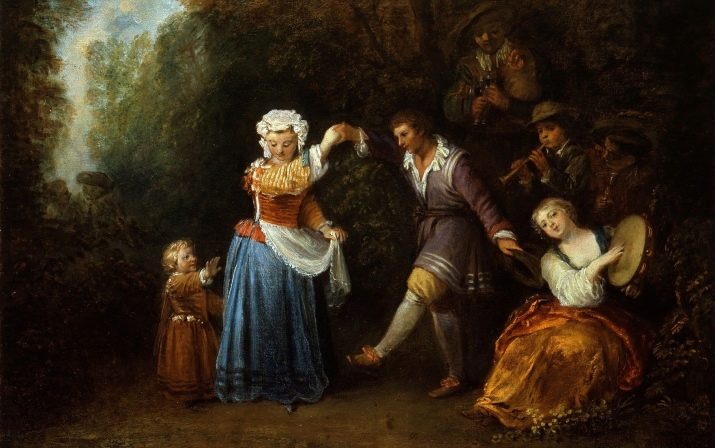
Although France is far from the first place where the tambourine appeared; it is considered to be an ancient French musical instrument. Over time, this musical instrument has become a significant part of the folk music not only of France, but also of the peoples of Spain, Italy, and Great Britain.
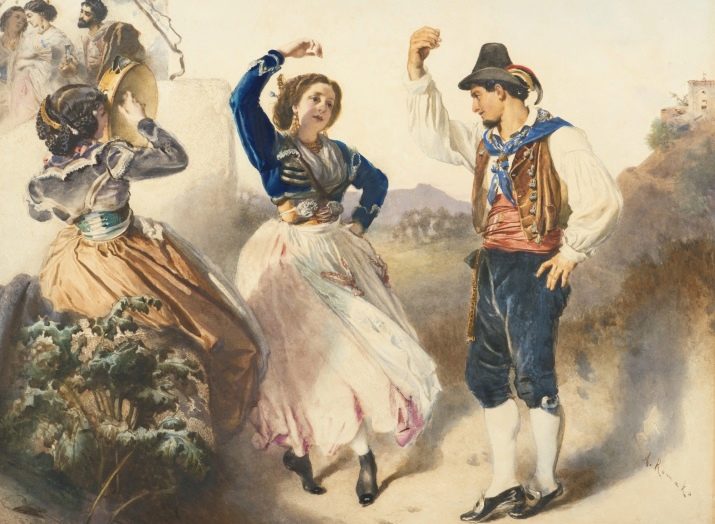
It is also interesting that many famous musicians and composers drew attention to the tambourine.
These include such masters as Wolfgang Amadeus Mozart, Pyotr Ilyich Tchaikovsky, Georges Bizet, and some others. By the way, it was the composer Wolfgang Amadeus Mozart who was one of the first to create a part for such a musical instrument as the tambourine. The composition in which this part is present is called "Deutsche Tanze".

By the 19th century, this musical instrument made itself known in America. So, already in 1843, at one of the concerts, the tambourine was used as the main instrument. By the middle of the 19th century, the tambourine began to be used as a rhythmic and noise instrument, even in symphony orchestras.
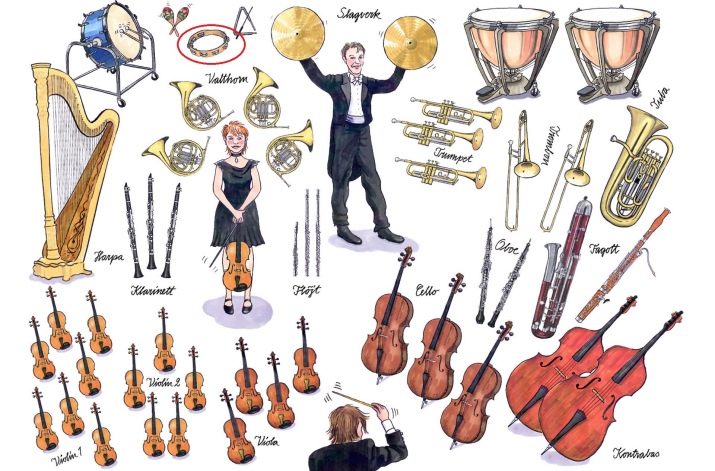
What are they?
There are a lot of varieties of such a musical instrument as the tambourine.They differ from each other in size, color, material, shape and other criteria. So, if earlier the tambourine could only be made of wood, nowadays you can also find plastic samples. Besides, in inexpensive models, the leather membrane is also replaced by plastic.
There are also foot tambourines.
This option will be convenient for accompaniment in that it can be fixed on the leg, and in your hands you can hold another instrument.

In addition, there are also round and semicircular tambourines. However, their shape is not the only difference. The round tambourine is a little more difficult to learn to use, but its sound is more mesmerizing. This semicircular tool is usually made of plastic. It is slightly more comfortable than the first round tambourine. Its straight side is most often used as a handle, due to which such a tambourine is much easier and easier to operate. In addition, this musical instrument is able to catch any shake of the hand, which gives its sound its own specific zest.
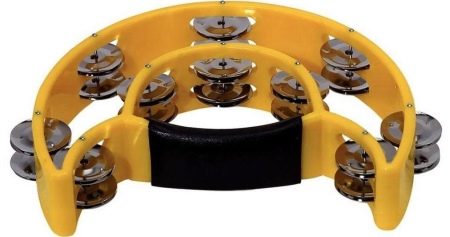
Popular manufacturers
At the present time, there are a large number of different manufacturers who are engaged in the creation and sale of such a musical instrument as the tambourine. The most popular of these are manufacturers:
- Sonor;
- Angel;
- Alice;
- Fleet;
- Dadi;
- Meinl;
- Nino Percussion;
- Orgeta.
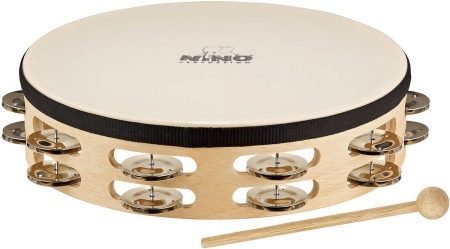
Modern application
The musical instrument tambourine, as well as its very close relative, the tambourine, are still relevant in the field of music. Despite the time, they have not lost their significance.
This instrument is popular among modern shamans, it is an important attribute of many of their rituals. Moreover, each blow to it denotes a certain universal symbol.
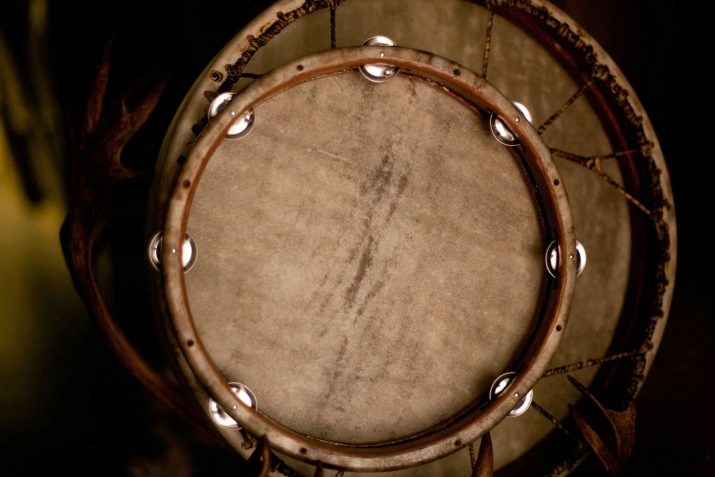
However, not only shamans liked such a musical instrument as the tambourine. Quite often, its sound can be heard at various concerts, it is also used by modern performers, since it is he who helps to give a musical composition a certain individuality, rhythm and a rather interesting color.
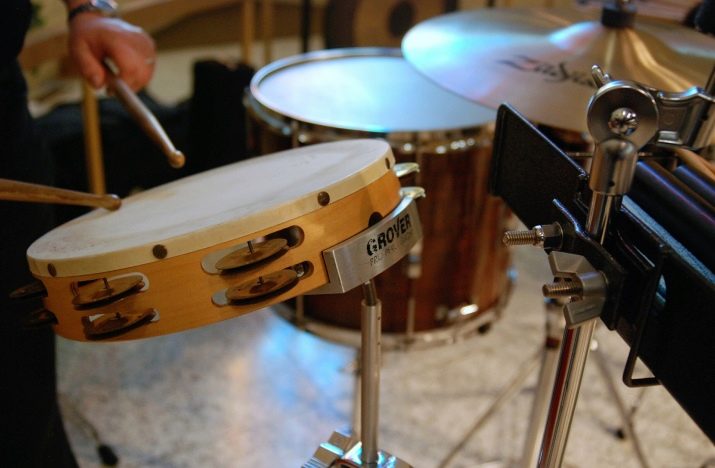
This musical instrument is used not only in folk ethnic music and dances. You can hear its sound in symphony orchestras, in addition, it is often used when creating pop and even rock music. So, such well-known musicians as Mick Jagger and Freddie Mercury, Mike Love, John Anderson, Peter Gabriel, Stevie Nicks, John Davison, Liam Gallagher and many other performers often used tambourine in some of their tunes.
This instrument gave a certain zest and specificity to a musical composition, made it unusual, and also added drive to it.
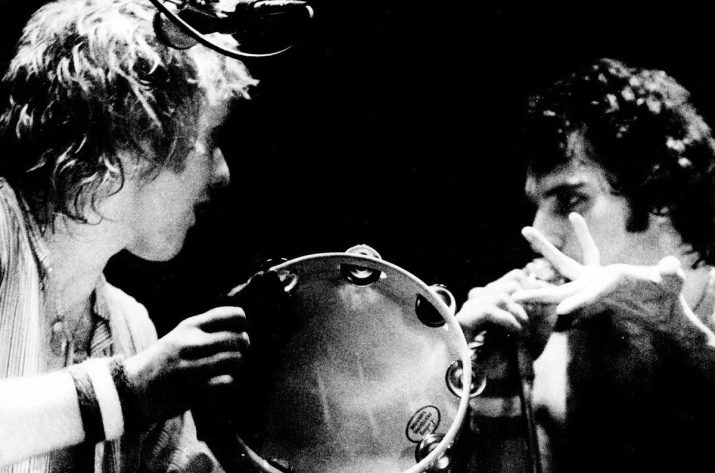
In addition, the tambourine is prized by many drummers. They are actively using it in modern drum kits.
How to play?
There are different ways to play the tambourine. When performing a musical composition, the instrument can be directly in the hand of the musician, placed on a stand, or generally be fixed on the leg, if it is a foot tambourine.
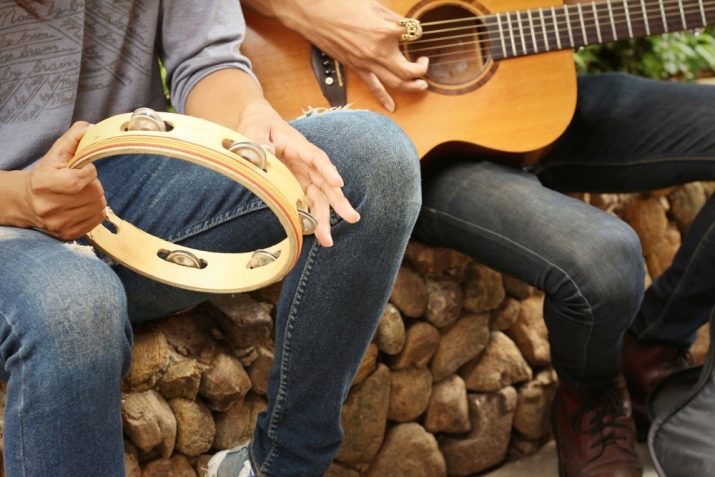
When playing, for sound production, usually the hands or specially designed sticks are used, and sometimes they hit the leg or thigh with a tambourine. Besides, the methods of blows are also different, they can be stroking or more harsh.
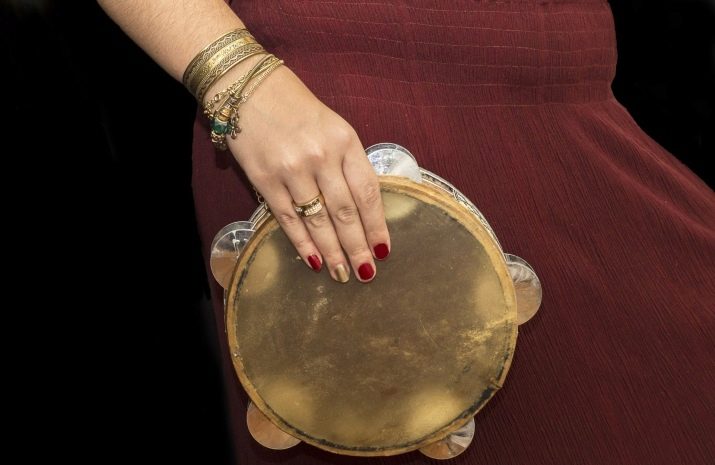
On which part of a given musical instrument the beats fall, its sound depends. The further they are applied, the more muffled the sound will be. In addition, the sound of the tambourine is caused not only by the strikes on its main working part - the membrane, but also any, even the lightest, shocks, since the instrument is very responsive in this regard.
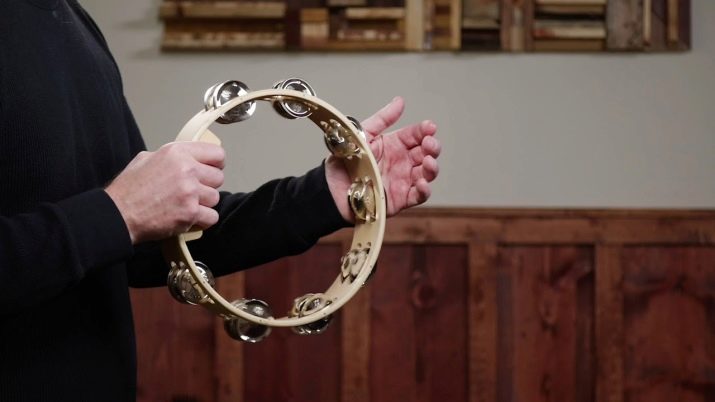
You can learn more about the varieties of tambourine in the next video.








